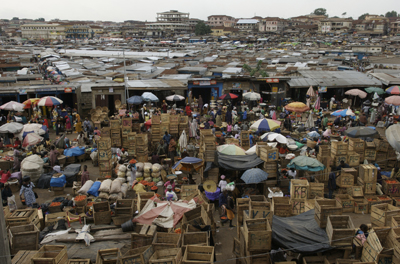Developing Special Economic Zones (SEZs) and Industrial Clusters in Africa

Summary
After learning about the success of East Asian countries in developing their economies and attracting Foreign Direct Investment (FDI) through Special Economic Zones (SEZ), many African governments wanted to use the same strategy to improve their economic performance. However, most African countries lack the capacity to design and implement SEZs, including lack of policy framework clarity, difficulties in physical planning and land administration, and insufficient regulatory and administrative knowledge. They have also not being very successful in involving the private sector in SEZs. In response, the World Bank connected Gambia, Ghana, Lesotho, Liberia, Mauritius, Mozambique, Nigeria, Senegal, Uganda, and Zambia to China, Singapore, and Malaysia to learn about successful development models in policies and implementation of SEZs. This knowledge exchange aimed at sharing development experiences about SEZs and cluster development, identifying possible solutions for Africa's development bottlenecks, and creating opportunities for continued interaction between counterparts in Africa and Asia, including investing in Africa by Asian companies.
“The exchange resulted in a clear vision and high-level political commitment on developing SEZs,” said Ganesh Rasagam, Senior Private Sector Specialist at the World Bank. “Each of the African countries developed an economic growth strategy based on an assessment of their strengths and limitations.”
The African delegates understood that the government role in SEZs should be to invest in infrastructure and provide the enabling environment and institutional support for private investment. They also learned that good governance, policy consistency, and zero tolerance for corruption can provide a competitive advantage for attracting investments. They noted that the Asian experience cannot be directly copied and started working on their own strategies for successful SEZs, keeping in mind the Asian experience as well as their newly acquired understanding that regional and global economic undercurrents should also be considered in the design of SEZs. The participants also learned that the institutions charged with promoting investment and development of SEZs need to have unambiguous legal mandates and strong political backing.
“I learned more about Special Economic Zones,” said Mohammad Baba Kachalla, Special Assistant on Micro Small and Medium Enterprises (MSME) Development at the Vice President Office of Nigeria. “[This included] new approaches to economic development, different approaches to SEZ development, different approaches to attract Foreign Direct Investments, different ways of how government agencies can interact to benefit SEZ, and about new Asian companies that are interested in investing in Africa.”
Beneficiaries / Participants
Many countries in Sub-Saharan Africa see the benefits of Special Economic Zones (SEZ) for attracting Foreign Direct Investment (FDI) to increase economic growth and development. Several such zones, involving strategies ranging from industrial zones to more complex growth poles and clusters, were already operational, while others were in various stages of planning and implementation. However, the governments of Sub-Saharan Africa face several common challenges in the successful design and implementation of SEZs, including lack of policy framework clarity; difficulties in physical planning, land administration, and safeguards; and insufficient management, regulatory, and administrative capacity. Moreover, most countries lack the knowledge and institutional structures for successfully involving the private sector in SEZs. For these reasons, ten Sub-Saharan African countries expressed interest in learning about successful development models in policies and implementation of SEZs.
China, Singapore, and Malaysia are among the East Asian countries that have successfully adopted the SEZ model to enhance Foreign Direct Investments and develop globally competitive industrial clusters. Shenzhen’s phenomenal success since the 1980s has been lucratively replicated in other regions of China. Malaysia and Singapore started SEZ development in the late 1960s and early 1970s and have developed world-class manufacturing clusters. Both Malaysian and Singaporean investors are developing and managing SEZs in other countries, sharing their considerable wealth of experience in the planning, design, and successful implementation of SEZs within both the public and private sectors.
Capitalizing on this development opportunity, World Bank staff connected officials involved in the development of SEZs in Gambia, Ghana, Lesotho, Liberia, Mauritius, Mozambique, Nigeria, Senegal, Uganda, and Zambia with experts from China, Singapore, and Malaysia. This knowledge exchange aimed at sharing development experiences on SEZs, cluster development, and FDI; building consensus on the development challenges among African officials; identifying possible solutions for Africa's development bottlenecks; and creating opportunities for continued interaction and technical exchanges between counterparts in Africa and Asia.
Moving forward
The exchange helped the development of several zones in Africa. For example, in Nigeria, the Chinese Huawei Corporation began negotiations to become a service provider in the new IT Park of the Abuja Technology Village, while talks with Cisco and IBM might result in a $3.5 million “co-laboratory.” In Ghana, the government started drafting a plan to work with the Singapore-based JTC Corporation and Jurong International of Singapore to develop a petrochemical hub. Licensing plans for the transport of vegetable and industrial oils involving Ghana, Burkina Faso, Togo, Mali, India, and China were also begun.
The exchange also led the Institute of Special Economic Zones Research in Shenzhen University and the World Bank to explore joint research possibilities in training and capacity building for zone development and management. Finally, the program has created opportunities for continued interaction and technical exchange between counterparts in Africa and Asia. A next step would be to include a practitioners’ exchange program, coupled with a robust community of practice, to help promote the development of SEZs and competitive clusters throughout Africa. While many challenges remain, this program moved the African nations one step closer to the end goal of enhancing foreign direct investment and globally competitive industrial clusters. The success of this exchange has made it only the first in a continued high-level interaction between China and Africa on different aspects of SEZ development.

 China
China Colombia
Colombia Denmark
Denmark India
India Indonesia
Indonesia Mexico
Mexico Russian Federation
Russian Federation Spain
Spain United Kingdom
United Kingdom